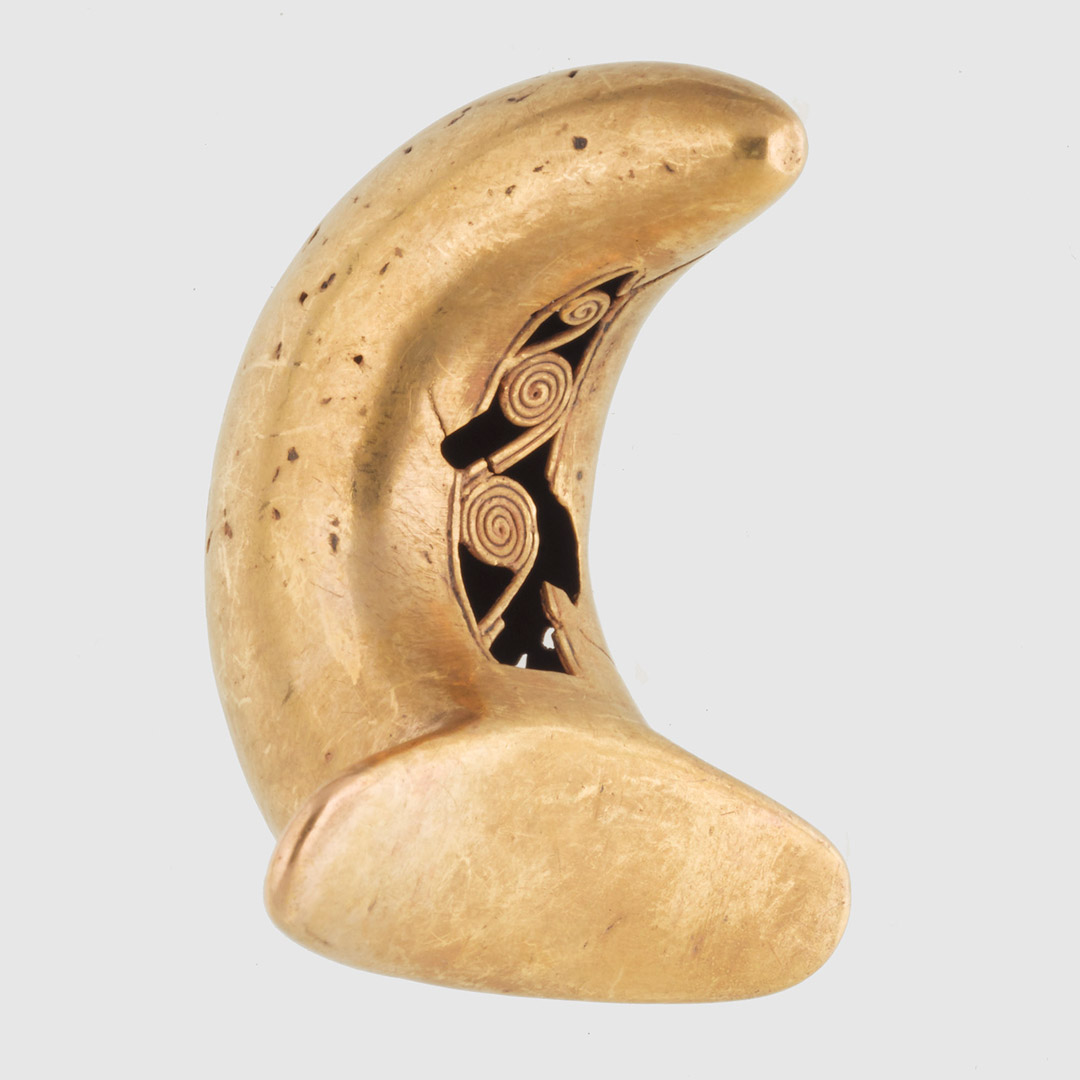Object of the Week: Labret

This beautiful gold object—known as a labret—was crafted circa 900-1500 AD in Pre-Columbian Mexico, either by the Mixtec or Aztec. Labrets have an extensive history and appear in cultures beyond Central and South America, in Africa, the Middle East, and Pacific Rim cultures. Despite its size, a mere 1 1/2 x 1 x 1 1/8 inches, this precious piece of jewelry was likely worn by a high-ranking person—perhaps a dignitary or warrior. A symbol of status, such ornaments would fit piercings in the lower lip; the flat backing would rest inside the mouth, while the decorated portion would extend away from face.
While much more elaborate labrets do exist, sometimes representing animals or featuring moveable elements (see this serpent labret with an articulated tongue for a rare example of both), this relatively simple labret bears an intricate spiral patterning on its reverse. Though not overly ornamental, the curved shape could certainly be interpreted as an abstraction of an animal form, perhaps a fang or beak, as birds and serpents were among many figures commonly depicted.
Gold has, throughout time and across cultures, proven to be an extremely precious metal. In Aztec culture, gold was sacred and understood literally as the excrement of the gods (from teocuitlatl—teotl, meaning ‘god’, and cuitlatl, meaning ‘excrement’). Unfortunately, when Spanish colonizers arrived to the Americas, many prized gold objects such as this labret were melted down in order to facilitate their transportation back to Europe and subsequent trade. Small gold objects from this period are rare, making this labret an exciting new acquisition that helps shed light on the important goldworking traditions of Mixtec and Aztec cultures.
– Elisabeth Smith, Collections Coordinator